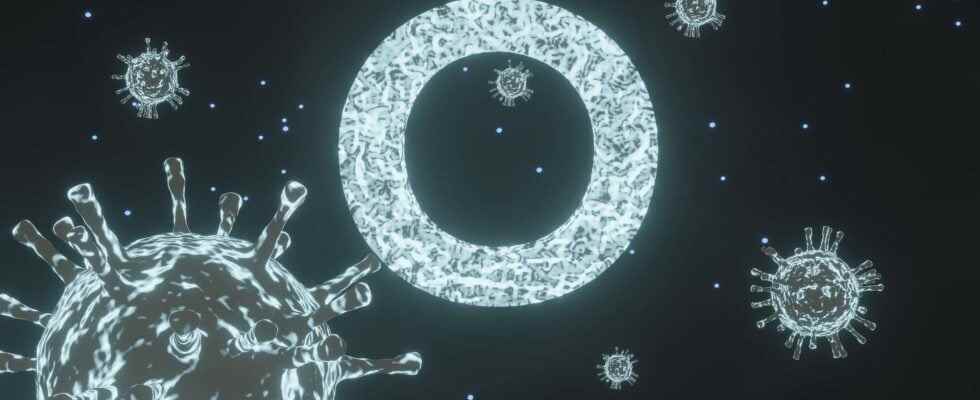Still unknown at the beginning of November, the Omicron variant is focusing the attention of scientists who are hard-working its genetics to detect potential clues about its contagiousness and severity.
You will also be interested
[EN VIDÉO] 5 questions about the Delta variant The Delta variant or B.1.617.2 variant, previously called the Indian variant, is causing concern to health authorities. How is it different? Should he worry us?
The variant Omicron crystallizes the anxieties of an endless epidemic, always relaunched by theemergence of a new candidate for the throne of the majority variant. Since its classification as a variant of concern by the World Health Organization (WHO) on November 26, 2021, around one hundred genetic sequences of the Omicron variant were shared by the scientific community. These sequences are peeled in all directions to try to anticipate Omicron’s behavior, its contagiousness and its severity. The first scientific publications resulting from this work are starting to appear. The team in charge of pathogens and the biosecurity of Beijing Institute of Microbiology and Epidemiology To published a detailed report on the mutations of the Omicron variant and some clues about its kinship links with the other variants.
Omicron, king of mutations
Compared to the reference sequence of SARS-CoV-2, the Omicron variant has 44 substitutions ofamino acids, 6 deletions and an insertion. The protein S brings together 29 of these substitutions, 3 deletions and one insertion. Half of these changes concern the receptor binding domain (RBD) which interacts with the ACE2 receptor. Analysis of previous variants suggests that RBD mutations significantly modify the behavior of the coronavirus. More precisely, nine amino acids seem to increase the links between the S protein and the ACE2 receptor, and therefore its ability to infect cells. The Omicron variant is mutated on four of them: K417N, Q493R, N501Y, and Y505H. The N501Y mutation, observed in other variants, increases the affinity of the S protein for ACE2 by a factor of 9. Taken together, these mutations suggest that the Omicron variant is particularly transmissible.
The other mutations located upstream or downstream of RBD could also participate in the epidemiological success of the Omicron variant. Modifications near the cutoff site of the two subunits of protein S could strengthen its resistance of antibody neutralizers. The N679K substitution, one of the three identified, has never been observed elsewhere. Beyond protein S, two mutations in the nucleocaspid, the protective shell of the genome of the virus, are also present. They are known to amplify the replication of theRNA viral and, in fine, the viral load. ” Therefore, the Omicron variant has the potential to trigger a new global epidemic peak “Write the scientists of the Beijing Institute of Microbiology and Epidemiology.
A future still uncertain
Scientists suggest that the Omicron variant is cut to spread fast rather than to cause severe symptoms. This remains to be confirmed. People infected with Omicron have developed mild forms of Covid-19, but they are mostly young and healthy. The origins of the Omicron variant remain nebulae, the first analyzes phylogenetics rather seem to bring it closer to the Alpha variant rather than to the Delta variant, yet the majority when it emerged. On paper, the Omicron variant has everything it takes to become a majority variant. The capacity of vaccines to slow down diffusion remains to be determined, but elementary barrier gestures such as wearing a mask, ventilating enclosed spaces and washing hands are still relevant.
Interested in what you just read?
.
fs6
